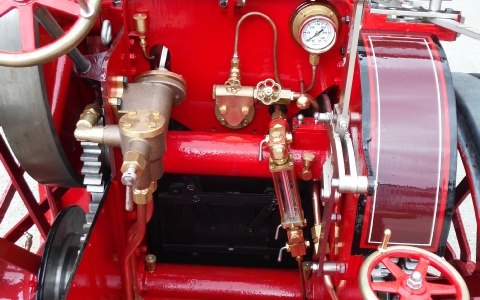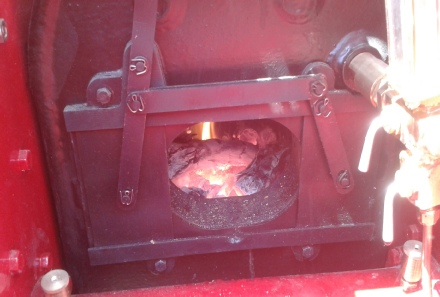The last few kits were quite late, so it wasn’t until a way into 2020 when I finally
fired the engine up. I was also not well on-
I bought some good Welsh Steam Coal, which is generally considered to be the best to use for steam engines. Unfortunately, it seems this will soon be in very short supply due to the government’s new legislation about burning coal, and the impending closure of the last Welsh mine.
I found it a bit of a learning curve getting the fire to burn nicely.
Testing
1/3-

The first task is to ensure the grate is clear of last time’s ash and clinker, and to rake out the ash pan. I also have to brush out the tubes that run from the firebox to the smokebox and chimney. I use what is essentially a giant bottle brush with brass bristles.
I have to place a 4’ long extension tube into the top of the chimney. This helps give the fire a better draw. I start it with wood and a rag soaked in paraffin.
I gradually add more wood and pieces of coal,being careful not to choke it. It takes around an hour and a half to two hours to get up to the full pressure. Once it’s starting to build up pressure I can open a blower which squirts steam up the chimney; this helps to draw the fire making it burn hotter.
In the picture on the left above you can see the round pressure gauge. The rectangular sloping device lower down is the water gauge. I’ve had a few problems with that; the fixture was a bit loose and I managed to crack the glass.
I’ve been gradually sorting out steam and water leaks: I can only fix them when it’s cold, so I have to make a note of what to do each time.
